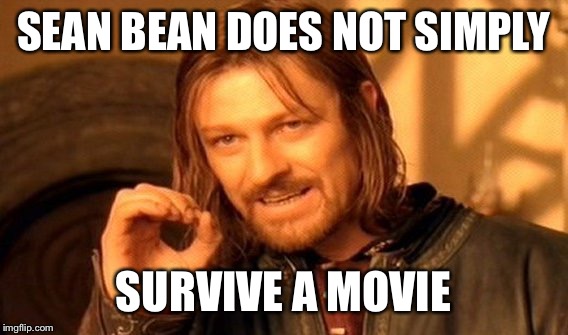It's finally happened: the answer to my antici… pation
How many times a day do you think about the Roman Empire the queer subtext of Frankenstein? It's sad that so many people seem to spend their whole lives without once doing it. And it's so easy, almost banal, to notice the wealth of potential queer readings of the story of a cisgender man who usurps the female role of giving life; a man who has no problem with building another man, but recoils in terror when asked to build a woman; a man to whom, when he's promised a visitation on his wedding night, it doesn't occur that his wife is involved in the picture. Dr. Frankenstein's unnatural creation, a child who is already an adult, a creature begotten outside the boundaries of heterosexual intercourse, shatters by the fact of simply existing the taken-for-granted necessity of marriage, parenthood, inheritance, and the elaborate pantomime of Regency courtship. Popes have had an accurate instinct in choosing IVF as their nemesis: once artificiality is invited to the dance of procreation, the artificiality of our family models is instantly exposed.
Which is why something like The Rocky Horror Picture Show was sooner or later destined to exist. I like to imagine what would have been said during the pitch meeting:
"Sir, I have a new script for you."
"All right, let's hear it."
"It's about two young lovebirds who get lost in the road on a stormy night and knock at the door of an ominous-looking castle."
"I like where this is going."
"Turns out the castle is the home of a mad scientist."
"Promising so far. Go on."
"In fact, he's a barely disguised—or rather, barely dressed, exquisitely disguised homage to Dr. Frankenstein."
"Oh, my! What do the youngsters do?"
"They just kind of stand there while the mad scientist sings about transvestism."
"Wait, what does that have to do with the story of Dr. Frankenstein?"
"Well, the man he's building in the lab is a breathing, talking sex doll."
"Remind me, who's the target audience for this?"
"Plot twist: the previous model he built escapes his cage."
"Oh, my!"
"Don't worry. He just sings a song and is promptly hacked to death with a pickaxe."
"That escalated quickly."
"Later that night, the mad scientist sneaks around the castle to seduce his sweet, innocent guests. Each separately, then both."
"That sounds complicated."
"It's actually super easy. Barely an inconvenience."
"Did you test this with viewers?"
"Trust me, they'll adore it for decades."
When I came up with the idea of the First Contact project, I wondered at what moments in my life I could have encountered the movies I was putting in the schedule. Metropolis, for example, is one of the conceivable choices of an informal film club run every year by a friend in college, a chemistry major who was obsessed with classic cinema. But when would I have ever had the chance to discover The Rocky Horror Picture Show? Not on Colombian television, that's for sure; I remember the angry parent letters complaining that Ranma ½ was confusing the kids. In late night cinema? No way. My parents enforced a totalitarian curfew. In Catholic school? Unlikely. This movie would have given some of my ordained teachers a heart attack—but not without first giving them a boner.
I made very few queer friends at my hometown, a dangerously homophobic place it took me the first half of my twenties to successfully flee. But even after I learned of the existence of this movie, I wouldn't have been caught dead speaking of it. My brain was still on full alert, watching for the slightest slip of word or body language that could mark me as a target. To most people who knew me, I remained closeted until a month before my wedding. Anything I could have wanted to know from the extensive heritage of queer culture was right there, just one torrent file away, but I still needed to give myself permission to walk under the rain and knock that door.
The Rocky Horror Picture Show is probably the kind of shock treatment I could have used back then, a perfumed, silky glove slapping me in the face, an abrasive bite leaving marks of lipstick and stubble. I lived through times when the thing my oversanitized education needed was something like this story about a couple of proper, well-behaved, straight Christian youth going through a night of wild erotic liberation, first shown on theaters at the same time that Puritan America was being loudly invited to partake in a societal metamorphosis of ways of loving and ways of being, an invitation that continues to be rudely refused for no good reason.
Time to void my queer membership card: I have very little patience for musicals. Just not my thing. The first musical film I ever enjoyed was Happy Feet, because the queer subtext landed close to home for me. But I sense a certain something in The Rocky Horror Picture Show, in its playfully trashy aesthetic, its matter-of-fact subversion of nuptial rites, its unafraid, unashamed disdain for standards of decency. It is the kind of art that fulfills the noble task of comforting the disturbed and disturbing the comfortable.
POSTED BY: Arturo Serrano, multiclass Trekkie/Whovian/Moonie/Miraculer, accumulating experience points for still more obsessions.





















